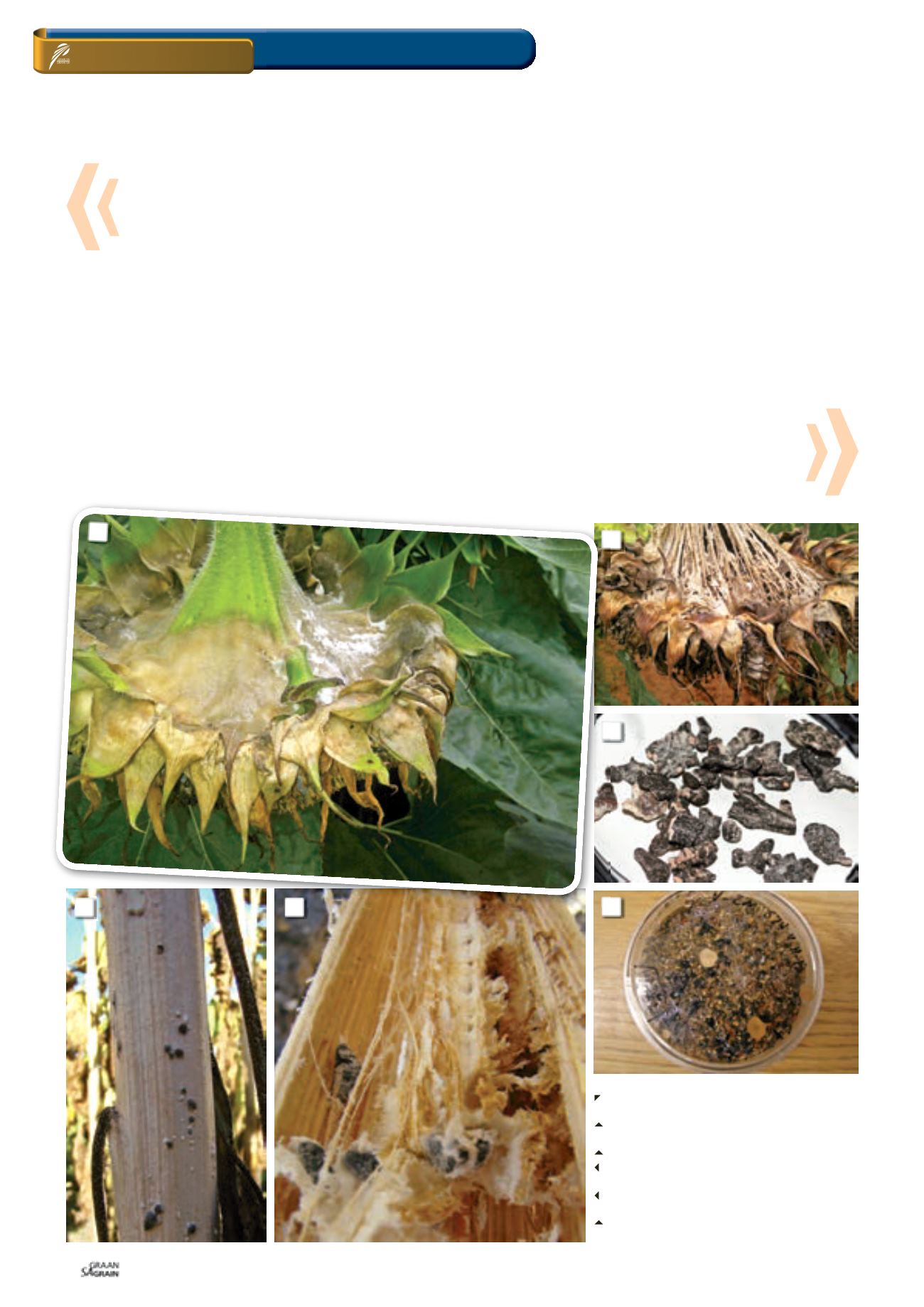

Maart 2015
96
plant, particularly during grain fill and a light brown, water-soaked
area at the stem base will become obvious. The sunflower stem pith
is a white, cotton-like tissue, which includes mycelial growth where
large black sclerotia form within. Sclerotia can sometimes be seen
on the outside of the stalks of sunflower plants when the plants get
older (
Photo 4
). The stem will often break at this point of infection
and when ripped open, black sclerotia can be seen (
Photo 5
). Heads
do not fill properly due to nutrients and water not being taken up by
the plant.
How does Sclerotinia infect sunflower
plants?
Sclerotinia head rot
The fungus survives in the field as sclerotia in the soil and in plant
debris. Sclerotia may survive for a period of up to four to seven years
in the soil. Infection occurs during the flowering stage when there is
high rainfall and cool temperatures. Wet soil results in the production
of apothecia (small, mushroom-like, fruiting bodies) (
Photo 6
) from
germinating sclerotia. Apothecia form and release spores into the air,
which are windborne and can infect the sunflower head during wet
weather. Wounds on the back of the sunflower heads may become
infection sources and initiate head rot.
Sclerotinia stem rot
In summer, when sunflower roots come in contact with the
sclerotia, the sclerotia germinate and infect the roots. The fungus
grows from the infected root into the taproot and forms a canker at
the stem base.
This infection prevents the plant from taking up water and nutrients
and the plant eventually wilts and dies. Neighbouring plants may be
infected by root-to-root contact with infected plants. Development
of stem rot is almost independent of weather conditions.
How to manage the disease
Outbreaks of sunflower head rot may result in infestation of lands
previously free or with low levels of Sclerotinia. The infested fields
are a threat to sunflowers and various susceptible crops, which may
be planted again after a season’s maize, since sclerotia may survive
for long periods in infested soil.
1: Early water-soaked symptoms of a Sclerotinia
infected sunflower head.
2: Later symptoms of a Sclerotinia infected
sunflower head showing fibrous strands.
3: Sclerotia which survive either in or on the soil.
4: Infected stem showing sclerotia on the
outside.
5: Ripped open sunflower stem showing sclero-
tia on the inside.
6: Apothecia produced by sclerotia on the soil
surface.
4
5
2
3
6
1
Sclerotinia disease of sunflower:
A devastating pathogen
ON FARM LEVEL
Integrated pest control

















